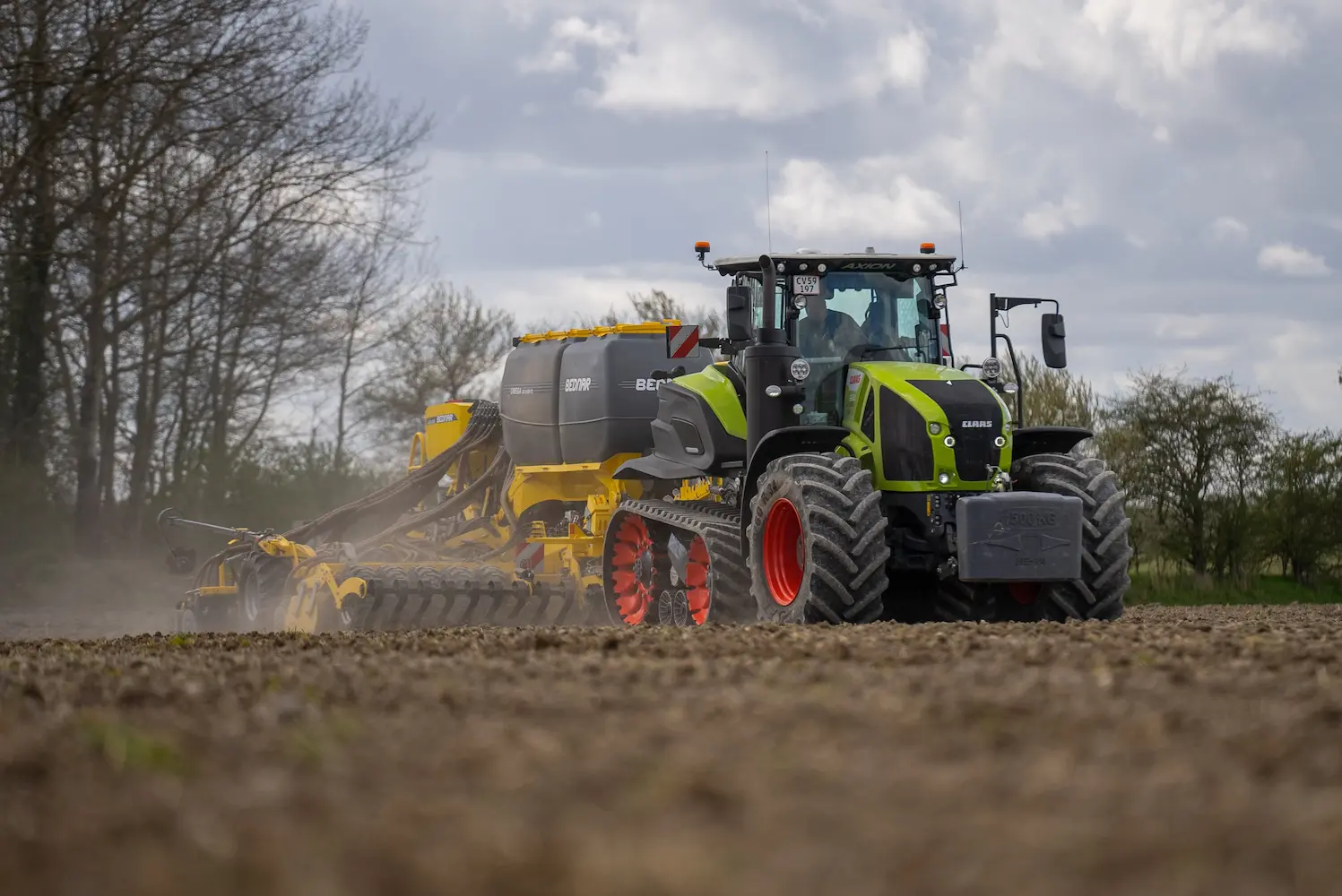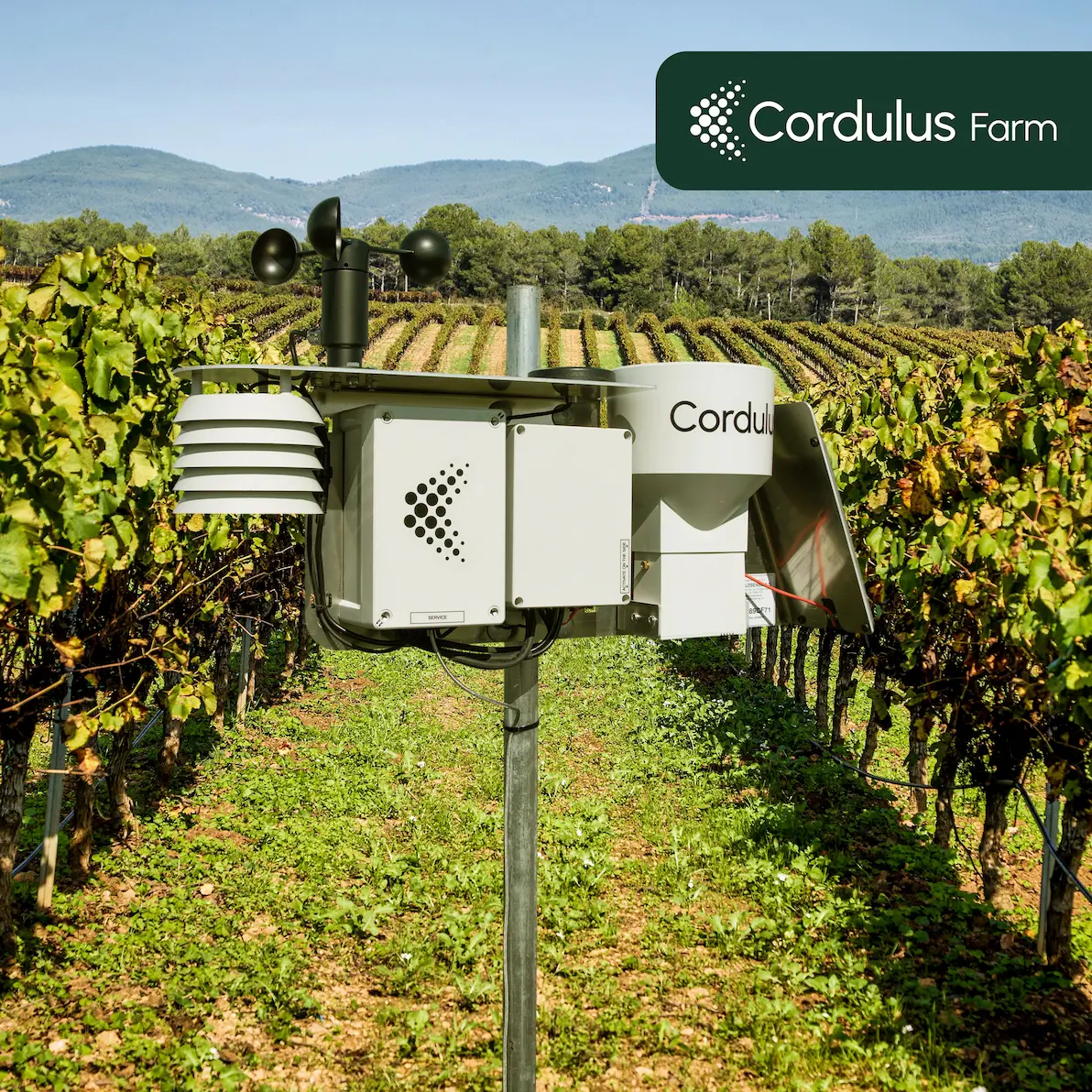Don't let the rain wash away your profits
_web.webp)
It's been a season of relentless rain across Europe. Fields are saturated, and the thought of driving heavy machinery onto that soggy ground sends shivers down any farmer's spine. We understand. Compacting wet soil is a recipe for disaster, leading to stunted root growth, decreased yields, and potentially long-term damage to the very foundation of your farm – the soil itself.
But hold on, there's no need to despair. While we can't control the weather (yet!), there are ways to navigate these challenging conditions and make informed decisions to protect your crops and your livelihood.
The dangers of soil compaction
Driving heavy machinery on wet soil creates immense pressure, forcing soil particles closer together. This seemingly minor change has significant consequences:
- Reduced Pore Space: Healthy soil has air pockets between particles, crucial for root respiration and water drainage. Compaction eliminates these spaces, suffocating roots and hindering water infiltration.
- Restricted Root Growth: Compacted soil becomes a physical barrier, making it difficult for roots to penetrate and explore deeper soil layers for water and nutrients. This leads to stunted plant growth and decreased yield potential.
- Increased Runoff and Erosion: When compacted soil can't absorb water properly, it runs off the surface, taking valuable topsoil with it. This erosion can lead to long-term fertility issues and leave your fields vulnerable to future weather events.
Making the most of a wet situation
The key to minimizing these risks lies in timing your field operations strategically. The ideal scenario is to wait until the soil dries naturally. However, farming doesn't always operate on ideal schedules. Here are some tactics to consider when venturing into wet fields:
- Reduce Tire Pressure: Lowering tire pressure distributes the weight of your machinery over a larger area, minimizing the compaction impact on the soil.
- Minimize Traffic: Plan your field operations efficiently to reduce the number of passes needed. Every pass adds to the compaction pressure.
- Controlled Traffic: This approach designates specific tracks for machinery, minimizing the overall area impacted by compaction.

Hyperlocal weather data: Your secret weapon
But how do you know when it's actually safe to enter your fields? Here's where hyperlocal weather data becomes your secret weapon. Traditional weather forecasts provide a broad picture, but they often miss the crucial microclimates that exist within your specific farm.
Our in-field weather stations provide real-time, hyperlocal data that paints a clear picture of the conditions on your land. No more guesswork, no more relying on forecasts for distant locations. Here's what you gain with in-field weather monitoring:
- Precise Rainfall Measurement: Know exactly how much rain has fallen on your fields, not just in a nearby town. This granular data allows you to assess the conditions in your fields with confidence.
- Historical Data Tracking: Monitor rainfall trends over time to understand the overall wetness of the season and predict future drainage patterns.
- Unmatched Forecasting Accuracy: Our weather stations use advanced algorithms to provide hyperlocal forecasts with up to 48% greater accuracy compared to traditional methods. This allows you to plan field activities with confidence, knowing when the ground will be firm enough to support machinery.
Beyond rain: A comprehensive picture
But our weather stations offer more than just rain data. They provide a comprehensive picture of the environmental conditions affecting your crops, including:
- Temperature and Humidity: Monitor these crucial factors for optimal crop growth and disease prevention.
- Wind Speed and Direction: Plan ahead for potential wind damage or use wind patterns to your advantage when applying pesticides or fungicides.
- Soil Temperature: Soil temperature plays a vital role in seed germination and root development. Knowing the soil temperature allows you to plan planting and harvesting activities strategically.
Turning data into actionable insights
All this data is easily accessible through a user-friendly mobile app. The app allows you to:
- Visualize Data: See real-time and historical data presented in clear, easy-to-understand graphs and charts.
- Use Actionable Analyses: Base your decision on intuitive analyses such as the spraying overview, pest and disease threats and the harvest dashboard.
- Set Alerts: Receive real-time notifications when specific weather conditions occur, allowing you to take immediate action.
- Track Trends: Identify long-term weather patterns and make informed decisions about planting, irrigation, and harvesting based on historical trends.
Don't let the rain dictate your decisions
Empowering yourself with hyperlocal weather data allows you to take control, even during challenging weather conditions. Make informed decisions, protect your precious soil, and ensure your crops have the best chance to thrive, regardless of the rain.
Ready to unlock the power of hyperlocal weather data on your farm?
Learn more about the app
Published:
April 8, 2024

.webp)

%20(1)%20(1).webp)
.webp)




%20(1).webp)








.webp)

.webp)




.webp)







.webp)









